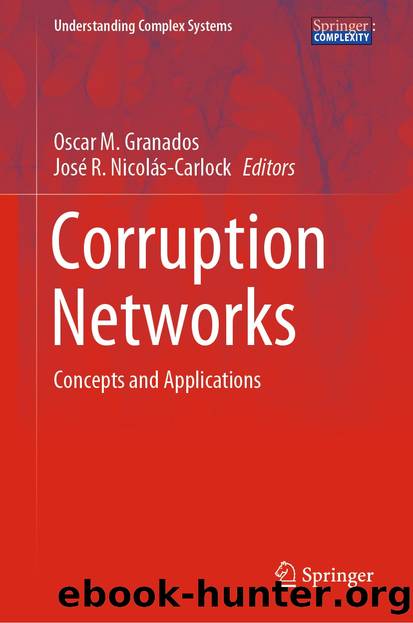Corruption Networks by Unknown

Author:Unknown
Language: eng
Format: epub
ISBN: 9783030814847
Publisher: Springer International Publishing
5.3.3 Measuring Corruption Risk
Having established that the defence industry, in particular its procurement arm, merits examination, we turn to the topic of measuring corruption risks. An emerging field of research quantifies corruption risks in public procurement using contract-level indicators that track the extent to which a contractâs award deviated from a norm of free and impartial competition [9].
For example, a contract awarded directly to a firm without competition clearly present a corruption risk. Competitors are often excluded in subtle ways, for instance by onerous and specific requirements for past experience or by the imposition of an impossibly short deadline to submit tenders. In these cases, the requirements might be tailored to the favored firm and the firm can be tipped off ahead of time about the call for tenders. Pooled together into a composite measure, these indicators provide a fine-grained, data-driven proxy for corruption risk in procurement contracts. Aggregated to regional and national levels, these indicators have a strong correlation with generally accepted measures of corruption prevalence [7]. They have been used to evaluate, among other things, the effectiveness of meritocratic promotion in improving quality of government [3].
Another great advantage of these micro-level measures of corruption risk is that they offer the opportunity to study the distribution of corruption risks within a country, market, or region. By mapping procurement markets as bipartite networks of contracting among buyers and suppliers, one can go beyond averages and study the complex organization of corruption. In general, it is known that corruption risks predict missing contracting edges, suggesting that corruption is about exclusion of non-favored competitors [10]. Corruption risks are also reflected in market structure across politically meaningful elections: network neighborhoods of high corruption risk actors rewire significantly across change in government [10]. While corruption risk indicators alone cannot prove corruption has taken place, they offer an alternative perspective on this important issue by searching for traces of organized bad behavior in broad data.
The network perspective has also given new insight into the phenomenon of capture of specific parts of a state by corrupt actors [12]. This manifests as clusters of highly corrupt actors in procurement market networks [34]. When such clusters exist in the center of a countryâs procurement network, this suggests that the situation is especially dire [8]. Altogether, this line of research reflects a growing recognition that corruption and economic crime in general is organized among many individuals and actors in a complex way [1, 18, 19, 30, 31].
Download
This site does not store any files on its server. We only index and link to content provided by other sites. Please contact the content providers to delete copyright contents if any and email us, we'll remove relevant links or contents immediately.
| Anthropology | Archaeology |
| Philosophy | Politics & Government |
| Social Sciences | Sociology |
| Women's Studies |
The Secret History by Donna Tartt(16611)
The Social Justice Warrior Handbook by Lisa De Pasquale(11486)
Thirteen Reasons Why by Jay Asher(7783)
This Is How You Lose Her by Junot Diaz(5755)
Weapons of Math Destruction by Cathy O'Neil(5032)
Zero to One by Peter Thiel(4818)
The Myth of the Strong Leader by Archie Brown(4787)
Promise Me, Dad by Joe Biden(4441)
Stone's Rules by Roger Stone(4413)
Beartown by Fredrik Backman(4406)
How Democracies Die by Steven Levitsky & Daniel Ziblatt(4393)
The Fire Next Time by James Baldwin(4338)
100 Deadly Skills by Clint Emerson(4072)
A Higher Loyalty: Truth, Lies, and Leadership by James Comey(4028)
Rise and Kill First by Ronen Bergman(4009)
The David Icke Guide to the Global Conspiracy (and how to end it) by David Icke(3876)
The Farm by Tom Rob Smith(3870)
Secrecy World by Jake Bernstein(3774)
The Doomsday Machine by Daniel Ellsberg(3726)
